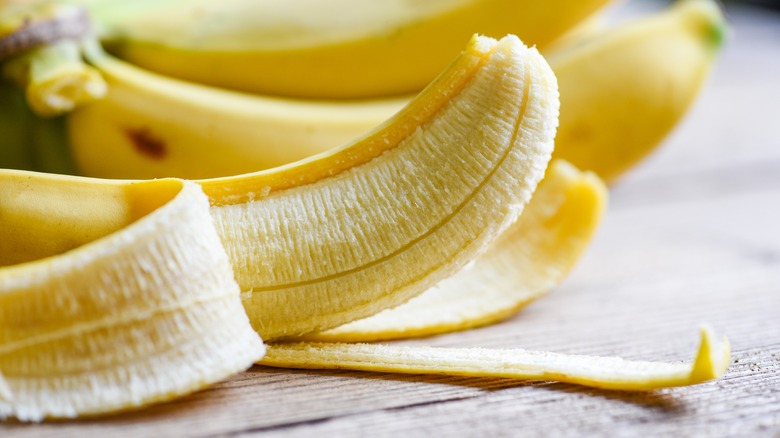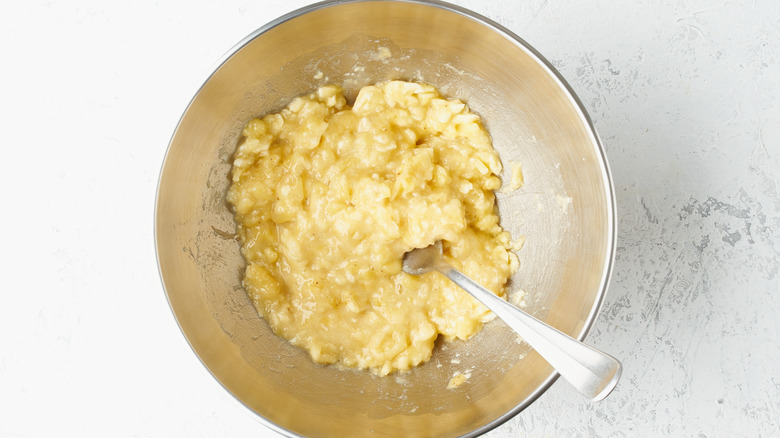How The Brits Made Their Own 'Bananas' During WWII
The exotic banana debuted in England in 1633, but the banana that the world came to know and love was introduced in the 19th century by John Paxton (via The Conversation). A descendant of the single-stemmed banana from Southeast Asia, Paxton's Cavendish banana seemed more alluring with its bright yellow hue, sugary profile, and polystem. Although it originated in Britain, the Cavendish and another popular banana species, the Gros Michel, were produced in tropical climates like the Caribbean, Canary Islands, and Latin America. So, much of Britain's banana supply came from their imports.
When WWII broke out, the Germans struck Britain's food supply by infiltrating its navy. The result? A restriction on imported goods, particularly the tropical delicacy that the country had grown to love. In November 1940, Lord Woolton, Britain's Minister of Food, ordered a complete ban on the import of bananas, per Atlas Obscura. After all, cereals and meats took priority in refrigerator real estate over what was considered a sweet luxury from the Caribbean. In the face of this change, the people sang wartime songs in the fruit's honor, such as: "When Can I Have a Banana Again?" and "Yes We Have No Bananas." Mothers made do with the general food shortage and created their own substitutes, which hardly resembled the food they missed so dearly.
Using parsnips as a substitute for bananas
While children today sing for candy, ice cream, and chocolates, kids during the war cried for bananas. Its custard-like texture and sweet, vanilla flavor were fondly missed during wartime — so much so that mothers decided to make their own bananas. Sadly, these substitutes were quite drab and almost hard to eat. A child at the time of the war, Joan Stokoe recalls the horrendous wartime recipes that were created to fill in the void left by the German attack on Britain's sea trade. Stokoe tells BBC that mock bananas were made from parsnips, a white root vegetable that closely resembles a carrot.
Mothers would concoct a mock banana by boiling the crunchy parsnip down so that it would be more tender and starchy. Then, they'd sometimes artificially color the mashed vegetable puree yellow so that it resembled a banana, and sweeten it with sugar and banana essence, according to Atlas Obscura. The 1940s Experiment describes this mock banana as something that tastes like both parsnip and banana combined. It was quite a stretch from the actual fruit, but it was edible. Of course, we can see in Marguerite Patten's cookbooks that there were numerous wartime recipes that came out of rationing; substituting was just something that people had to do.
Meanwhile, in the Philippines, there was an excess of bananas, and a shortage of tomatoes, which led to the invention of banana ketchup, which is a classic condiment in Filipino cuisine to this day. This substitute has withstood the test of time, while banana parsnips might be best left forgotten in the past.

